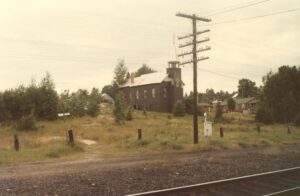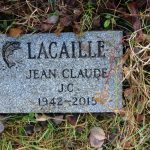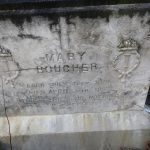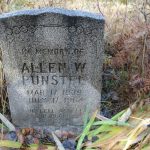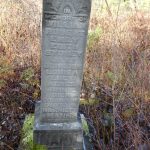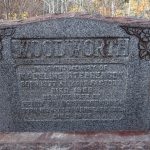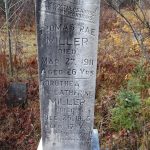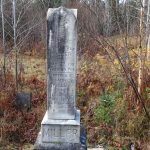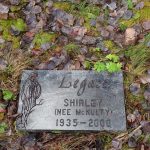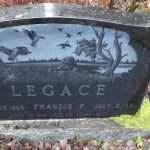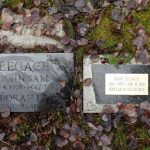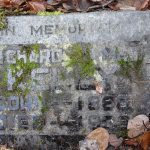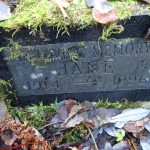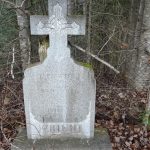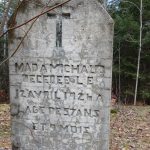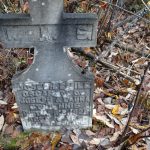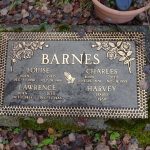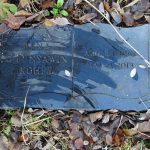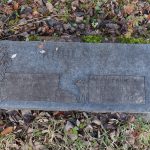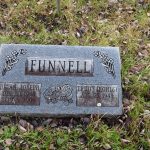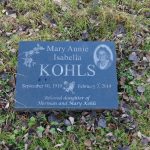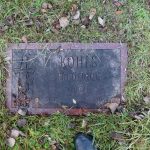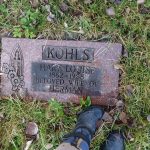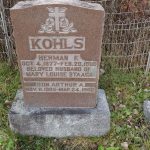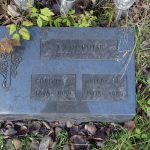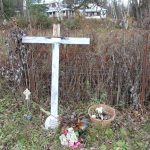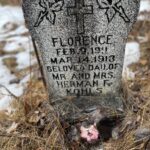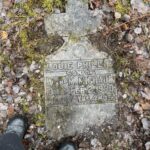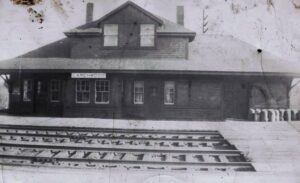St. Paul’s Roman Catholic Church of Biscotasing
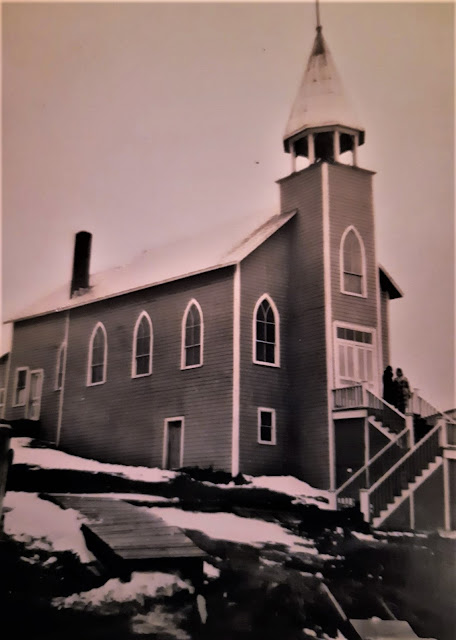
Biscotasing was the home of St. Paul’s Roman Catholic Church.
The pastoral responsibility for Roman Catholics in Biscotasing belonged to the Jesuit Parish of Saint Anne of the Pines (St. Anne’s) in Sudbury from 1883 until 1925 when the Jesuits passed the responsibility of the mission to the Diocese of Sault Ste. Marie. From 1925 onward, Biscotasing became a mission of St. Francis Xavier Parish in Cartier.
The construction of St. Paul’s commenced in 1904 or 1905. Father Eugène Lefebvre of St. Anne’s came to Biscotasing to bless the newly built church in 1905.
On June 12, 1913, a fire began in a small shack beside St. Paul’s and within minutes the church was ablaze. High winds drove the fire and within a short time destroyed much of the town’s local industry, including St. Paul’s Church. A new church was quickly rebuilt.
As the years passed, the front stairs of the church were removed. After the removal of the front stairs, access to the church was from the rear and sides of the building.
By 1976, St. Paul’s had closed as a mission church and stood empty for many years. In October of 1988, the bells of St. Paul’s were removed and taken to Levack, Ontario where on October 14 the bells were installed at St. Bartholomew’s Catholic Church.
At one time, plans were in place to make St. Paul’s into the town’s community centre. However, the plan did not pan out and the church and property were sold to a private interest. By the 1980s the building had been condemned. The church still stands today, however, the structure is in very poor condition.
Catholics in Biscotasing can still hold celebrations (marriages, funerals, etc.) at the St. John’s Community Church. St. John’s Community Church is an Anglican Church, opened in 1908 with the Rev. Banting officiating as the first minister over the Anglican congregation. St. John’s, to this day, remains a vibrant centre for the residents of Biscotasing.
A short History of Biscotasing
Before the arrival of the Europeans, Biscotasing, an Ojibwa word meaning “a body of water with long arms” and the surrounding lands were occupied by the Anishnawbek people of the Sagamok and Atikameksheng First Nations. These first peoples made a living off of the land through traditional activities such as hunting, trapping, and trading. Biscotasing hugs Lake Biscotasi (pronounced bisk-O-teh-see) which means “lake of long bays” in Ojibwa.
In 1882, the Canadian Pacific Railway (CP) began construction of its transcontinental main line from Sudbury through to Biscotasing. The railway was granted 470 acres of land in Bisotasing although only 30 acres were cleared. By 1884, the railway had completed construction on most of the line and in November of 1885, the first passenger train service between Montreal and Winnipeg was inaugurated.
A post office and a general store were built in 1885 by J.A. Wright
In 1887, the Hudson Bay Company established a trading post. A third of the trading that occurred at the trading post was that of the Aboriginal fur trade. “Grey Owl”, also known as Archie Belaney (a transplanted Englishman), documented Biscotasing in one of his writings. He referred to Biscotasing as, “one of the principal gateways to the Great Lakes to the south, trappers, river men and forest rangers from the Spanish, the Groundhog and the Mississauga have made merry there….”. The trading post would burn down a year later (1888) and be rebuilt.
Around 1894, two groups, Barnath & McNeil, and Joiffe & Beatty each set up mills. A third firm, O’Neil & Simpson, began producing squared timber primarily for the CPR. The O’Neil and Simpson mill later became the Sudlen and O’Neil lumber mill. In 1898, the Sudlen and O’Neil mil was destroyed by fire. The Mill was rebuilt four months later, under the ownership of Booth & Shannon, who assumed the operation of the other mill as well.
By the turn of the century, a Catholic Church and cemetery had also been established.
A proper school was built in 1906 to replace the structure that was being used as the school. In 1907, the Ontario Government opened a Forestry office. A year later an Anglican church was built. In 1909 a hospital was built. St. John’s Anglican Church opened in 1908 with Rev. Banting officiating as the first minister.
The trading post and lumber mill were both destroyed by a fire in 1913 along with a good portion of the rest of the town. Both the trading post and the lumber mill were both rebuilt.
The trading post closed in February of 1927 after the building was again destroyed by fire. The lumber mill also closed in 1927 after it fell into financial trouble. The mill was torn down about a year later.
At the height of the town’s existence, the population of the town was around 500 people. With the relocation of the railway’s operation to Chapleau, the population dropped to about 300 people by 1911. Once the mill and the trading post closed, the population continued to decline. The railway removed the siding and yard tracks in 1965, with the passenger station closing in 1966. The school was closed in 1972 when the town’s population stood at only 80 residents. The town finally received electricity in 1980.
Last Updated on: August 28, 2025

